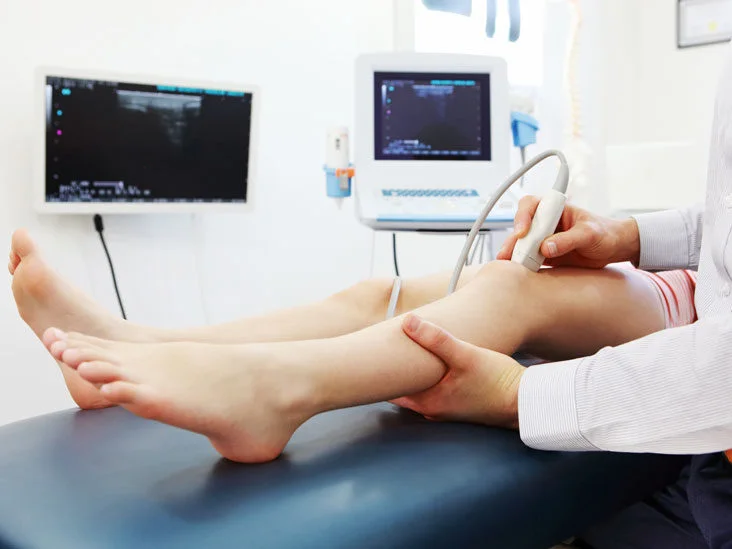Vascular ultrasound, also known as a duplex study, is a noninvasive test that uses high-frequency sound waves to assess blood flow in the arms, neck, and legs. It aids in the diagnosis of conditions such as blood clots and peripheral artery disease, as well as in assessing blood vessel health following bypass or candidacy for angioplasty. The test generates detailed images of soft tissue and blood vessels, assisting doctors like Dr. Vinod Kumar in making accurate diagnoses.
When is a vascular ultrasound done?
A vascular ultrasound is used to assess blood flow in veins and arteries, which can help with the diagnosis of conditions like atherosclerosis, blood clots, carotid artery disease, chronic venous insufficiency, deep vein thrombosis, extracranial carotid artery aneurysm, peripheral artery disease, vascular disease, and varicose veins.
When to get it done?
A vascular ultrasound exam may be required if you have symptoms such as a burning sensation in your legs, muscle atrophy, pain in your buttocks, hips, thighs, or calves, or unhealed leg ulcers. An ultrasound technologist, who is specially trained in performing ultrasound tests, performs the test. Additionally, vascular ultrasound is used by healthcare providers to assess blood flow to organs, evaluate candidates for angioplasty, and monitor blood vessel health after venous disease bypass surgery.
What happens in vascular ultrasound?
Vascular ultrasound creates detailed images of soft tissues and blood vessels by using high-frequency sound waves. These sound waves generate echoes, which computers can then convert into images or videos. A vascular ultrasound usually does not require any special preparation, and patients are advised to wear comfortable, loose-fitting clothing and leave any jewelry or valuables at home. It is best to arrive at the facility about 15 minutes before the appointment.
You lie on an examination table during a vascular ultrasound, and a technologist applies gel to the areas being examined. They create detailed images of arteries and veins using a probe called a transducer that is pressed against your skin. During the test, you may feel slight pressure as the probe is moved, and you may hear the sound of your blood flowing.
Final thoughts:
Vascular ultrasound measures blood flow rate and detects blockages and narrowing of blood vessels. A radiologist interprets the results and sends them to your doctor. There are no expected side effects from the exam, but please notify your healthcare provider if you notice any new or worsening symptoms.

